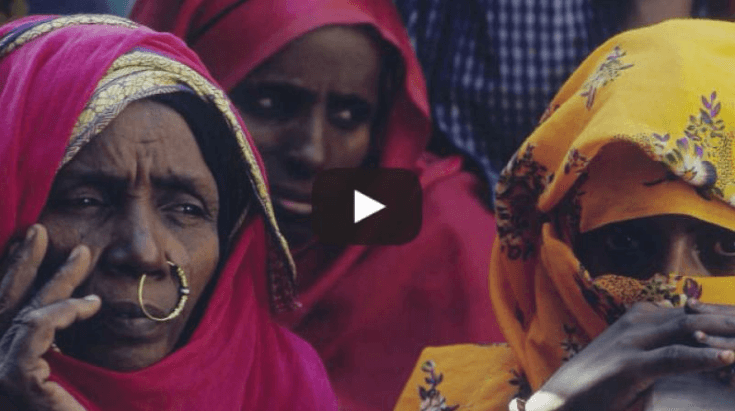
Perceptions and attitudes of Rohingya community stakeholders to pregnancy termination services: a qualitative in camps of Cox’s Bazar, Bangladesh
by Atiya Rahman, Joe Strong, Pragna Paramita Mondal, Audrey Maynard, Tasnima Haque, Ann M Moore, Kaosar Afsana
Conflict and Health 4 March 2024 (Open access)
Abstract
Background: Rohingya women suffer from inaccessibility to sexual and reproductive health services in Myanmar. After the forcible displacement of the Rohingya from Myanmar to Bangladesh in 2017, pregnancy termination services have been increasingly important and desired, while knowledge gaps and obstacles to access services still exist. The role of community stakeholders is critical as gatekeepers and decision-makers to improve and strengthen pregnancy termination services for women in camps. However, there is paucity of evidence on their perspectives about pregnancy termination. This qualitative study aims to understand the perception and attitudes of Rohingya community stakeholders to pregnancy termination in the camps of Cox’s Bazar.
Methods: We used purposive sampling to select 48 participants from the community stakeholders, 12 from each group: majhis (Rohingya leaders), imams (religious leaders), schoolteachers, and married men. We conducted in-depth interviews of all the participants between May-June 2022 and October-November 2022. Data were coded on Atlas.ti and analysed using a thematic content analysis approach.
Results: Multiple socio-cultural and religious factors, gendered norms and stigma associated with pregnancy termination acted as barriers to women seeking services for it. From a religious stance, there was greater acceptance of pregnancy termination in the earlier period than in the later period of pregnancy. We observed that pregnancy termination among community stakeholders in earlier stages of pregnancy than later. However, circumstances, such as a woman’s marital status, whether she sought her husband’s permission or her ability of childcare capacity, were often framed by community stakeholders as ‘acceptable’ for pregnancy termination. Health concerns and social and contextual factors can influence community stakeholders supporting pregnancy termination.
Conclusions: The community stakeholders perspectives on barriers and enablers of pregnancy termination were variable with the context. These perspectives may support or impede women’s ability to choice to seek pregnancy termination services. To improve women’s choice to pregnancy termination, it is critical to consider roles of community stakeholders in creating their supporting attitudes to women’s choice and access, and to designing targeted culturally appropriate interventions with communities’ support and engagement.
+++
Implementation of “healthy men, healthy communities”: a health promotion and gender-based violence prevention program for male South Sudanese refugees in Uganda
by Ruth Zielinski, Daniel Kuir Ajak, Nora Drummond, HaEun Lee
Healthcare 2024:12(2):147, 9 January. DOI: 10.3390/healthcare12020147
Abstract
Men living in refugee settings are often exposed to violence, poverty, and social instability, which impacts physical and mental health and increases the risk of perpetrating sexual and gender-based violence. Healthy Men Healthy Communities was developed as a male-led health promotion program to address men’s physical and mental health and their role in creating healthy relationships and families. Three community leaders from the settlements were trained to facilitate the program, which was implemented among six groups consisting of twelve men in each group. Pre- & post-surveys and feedback were collected among the facilitators and participants. Facilitators suggested culturally appropriate ways to present physical activities as a stress reduction technique and the importance of spacing out births. The small group setting facilitated open conversations on topics such as birth spacing and healthy partner communication. Participants experienced an increase in knowledge and confidence in practicing the program content, such as stress-reduction techniques and healthy communication strategies. Participants recommended additional topics such as fertility and sexually transmitted infections. The Healthy Men Healthy Communities program has the potential for wider implementation among male South Sudanese refugees to promote their health as well as the health of their families.
+++
Antenatal care utilization and its determinants in fragile and conflict-affected situations in Sekota Zuria District, Northern Ethiopia, 2022: A community-based cross-sectional study
by Getachew Muluye Gedef, Biniyam Girma, Fantahun Andualem, Abeba Gashaw, & Nebiyu Solomon Tibebu
Midwifery. February 2024
Abstract
Background: Access to maternal and reproductive health services has been one of the most affected components by armed conflict. Understanding how fragility and conflict may restrict access to maternal health services and promoting situation-specific policy options are crucial for reducing the effects. As a result, this study intends to assess the antenatal care service usage and associated factors in vulnerable and conflict-affected situations in Sekota Zuria district, Northern Ethiopia.
Methods: A community-based cross-sectional study design was employed on 593 mothers who had given birth in the past two years preceding the survey in the Sekota Zuria district from October 15 to 30, 2022. The data were collected by using an interviewer-administered structured and pretested questionnaire. To pinpoint the determining factors, a bivariable and multivariable logistic regression model was applied. For both steps, variables were deemed significant if they had a P-value of lower than 0.05. We use adjusted odds ratios to measure how strongly the dependent and outcome variables are related.
Results: The prevalence of antenatal care service utilization in the study area was 54.5%, 95% CI: 50.0–58.0%. Considering prenatal visits as routine prenatal checkups (AOR = 2.54, 95% CI: 1.74-3.69), using healthcare providers as a source of information (AOR = 2.30, 95% CI: 1.38-3.81), planned pregnancies (AOR = 1.74, 95% CI: 1.07-2.82), were positively associated with utilization of antenatal care. Whereas, respondents’ restricted movement because of insecurity negatively affected the service utilization (AOR = 0.30, 95% CI: 0.18-0.49).
Conclusions: The antenatal care utilization in the study area was 54.5%. Respondents’ restricted movement because of insecurity negatively affected the service utilization during the fragile and conflict-affected situation. So it demands designing context and vulnerable group-specific healthcare policies and strategies in fragile and conflict-affected situations. It is also very important to strengthen the availability and accessibility of maternal healthcare services in conflict-affected areas through outreach initiatives and mobile clinics.



